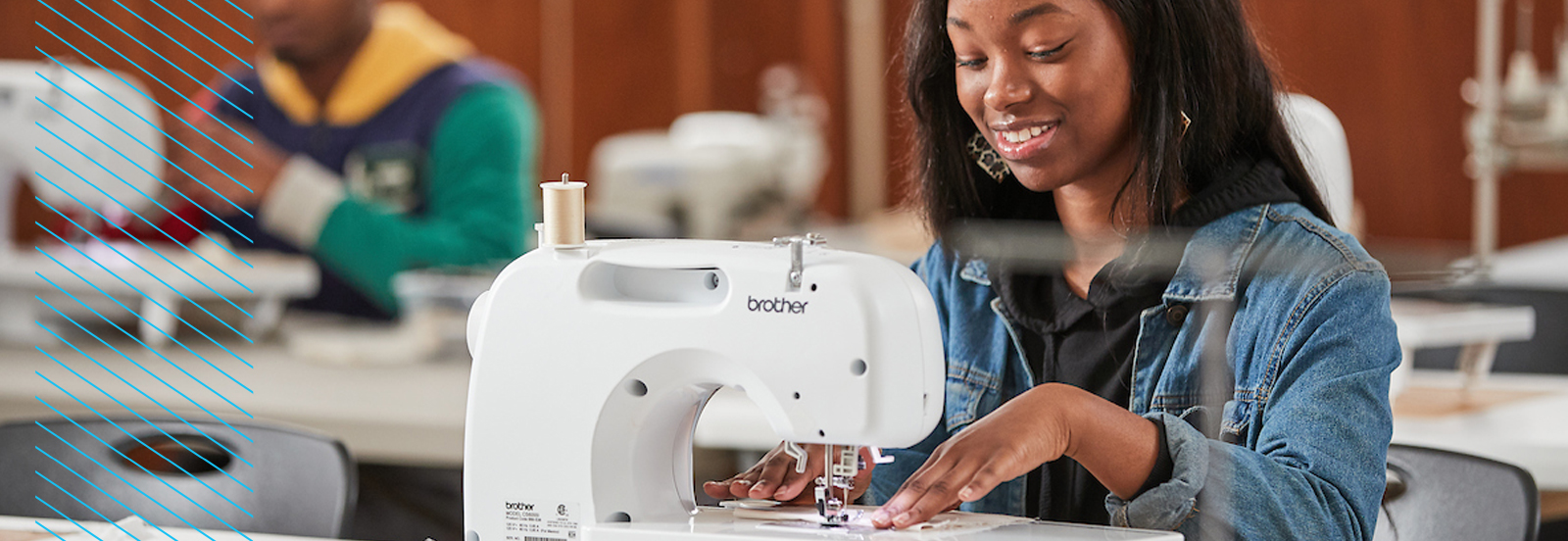Department of Art and Design
Art - Fashion Design, B.A.

Fashion design is about creating clothing that meets the needs and desires of the wearer while also expressing their personality and sense of style. It requires a deep understanding of fabrics, materials, and construction techniques, as well as an ability to stay current with trends and cultural movements.
Overview
In the fashion design concentration, students focus on developing the skills, knowledge, and creative vision necessary to design and create garments and fashion collections. Students gain proficiency in industry-standard design software and learn how to apply these tools to their design projects. Throughout the program, they immerse themselves in a range of areas that shape their understanding and abilities in fashion design.
First and foremost, students focus on honing their creativity and developing their artistic vision. They engage in sketching, drawing, and visual exploration to cultivate their ability to generate innovative and aesthetically appealing fashion designs. They learn to translate their ideas onto paper and develop a strong sense of style and personal expression.
Technical proficiency is another crucial aspect of the program. Students acquire skills in patternmaking, draping, sewing, and garment construction. They work with different types of fabrics, understand their properties, and learn how to manipulate and combine materials to bring their designs to life. They become adept at using industry-standard tools and equipment to create high-quality garments.
Fashion history forms an integral part of the curriculum. Students study the evolution of fashion, examining influential designers, historical trends, and cultural influences. They gain insights into the socio-cultural context of fashion, understanding how it reflects and shapes society. This knowledge informs their design decisions and helps them establish a strong foundation in the field.
Students also delve into fashion illustration and digital design. They learn how to create detailed and expressive fashion illustrations, using various techniques and media. Additionally, they explore computer-aided design software to develop technical drawings and digital prototypes, enhancing their design process and communication skills in a digital context.
The program places a strong emphasis on the development of a professional and market-oriented mindset. Students engage in trend analysis, market research, and target audience identification. They learn how to create collections that align with market demands while maintaining their unique creative voice. They gain knowledge in branding, marketing, and visual communication to effectively present and promote their fashion designs.
Collaboration and industry exposure are also vital components. Students participate in internships, industry projects, and fashion shows. These opportunities provide real-world experiences, allowing them to work alongside professionals, gain industry insights, and build valuable connections.
Throughout the program, students receive feedback and guidance through critiques, workshops, and interactions with faculty and peers. They are encouraged to experiment, take risks, and refine their design processes.
The program culminates in a capstone project that showcases students' artistic growth, technical proficiency, and conceptual development.
Curriculum and Concentration Requirements
Please review the official academic catalog for comprehensive information on requirements.
Careers
Concentrating in fashion design opens a wide range of career opportunities in the fashion industry and beyond. Possible career paths for students concentrating in fashion design:
- Fashion Designer: Fashion designers create original clothing and accessory designs, ranging from haute couture to ready-to-wear lines. They use their knowledge of fashion trends, fabric selection, and technical skills to bring their designs to life.
- Textile Designer: Textile designers create the patterns and designs for fabrics used in fashion and home décor. They use computer-aided design software to create patterns and work with manufacturers to produce the final product.
- Fashion Merchandiser: Fashion merchandisers work for retailers, department stores, and fashion brands to develop and implement marketing and sales strategies. They use their knowledge of fashion trends and consumer behavior to create product displays, advertising campaigns, and promotions.
- Fashion Illustrator: Fashion illustrators create sketches and drawings of clothing designs
for fashion designers, retailers, and publications. They use their artistic skills and knowledge of fashion to create accurate and appealing representations of clothing designs. - Costume Designer: Costume designers create clothing and accessories for theater, film, television, and other performing arts productions. They work with directors and other production staff to develop costumes that fit the characters and convey the desired mood and tone.
- Fashion Journalist: Fashion journalists write about fashion trends, designers, and industry news for print and online publications. They use their knowledge of fashion history and current trends to create engaging and informative content.
- Fashion Stylist: Fashion stylists work with individual clients, retailers, or publications to create looks and outfits that fit the client's needs and preferences. They use their knowledge of fashion trends and styling techniques to create appealing and cohesive looks.
Depending on students’ interests and skills, their creativity, technical skills, and knowledge of fashion trends can be applied in many different ways.
Facilities
MN Room 400D, 1,600 SQ FT
- 29 Full scale dress forms
- 4 Full body mannequins
- 11 Half scale dress forms
- 8 Brother CS6000i sewing machines
- 4 Juki DDL-8700 Industrial Straight Stitch Sewing Machines
- 2 Juki MO-6814S Industrial Serger Machines
- 4 Brother 1034D Serger Machines
- 2 Brother 2340CV Cover Stitch Machines
- 1 Pacific Gravity-Feed Iron and Board PSI-5E
- 1 Laurastar Ironing System and Board
- 2 Black and Decker Steam Irons
- 1 Beautural Steam Iron
- 2 Traditional Ironing Boards
MN Room 400C, 102 SQ FT
- 1 Xerox Phaser 7500 Printer
- 1 Epsom GT15000 Scanner
- 1 Consew 897VF Industrial Cover Stitch Machine
- Tech Sew 5100 Industrial Leather Machine
